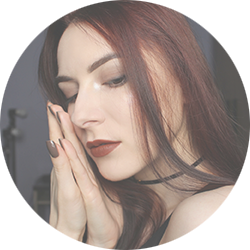







Welcome Back
Sign in to be closer to your community!
Follow other divas, like and comment
on their posts, message them, and see
who loved your posts!
Invalid username or password
You have not verified your account by clicking on the link we sent you via email. Please check your email folders (including your Spam folder) and click on the verify link sent.
Email is required
Password is required








Join FashionPotluck.com
Create your own profile in order to create content, follow other divas and like their posts, use our own messenger, and be a part of a growing international women community!
WELCOME TO OUR COMMUNITY
Fashion Potluck -
the first social media
platform for women.
You are free to read/watch & create content,
express your true self, and interact with others.
Join for free
Already a member? Log in here.
Purchase Alert
Dear Queen, you can only buy from one seller at the time. Please finish this purchase first in order to buy from another FP member
Comments
Please select one platform to continue
Please select one platform to continue
Please select one platform to continue
Please select one platform to continue
Please select one platform to continue
Please select one platform to continue
Please select one platform to continue
Please select one platform to continue
EDITOR APPROVED
You are wondering what is this 'Editor Approved'?
Well, this is pretty awesome! In order for the post to qualify and receive this accolade, it has to have a minimum of 700 words and two images (at least one original).
Receiving this accolade means two things: 1) Your content is amazing! Good job! 2) Your content qualifies for our monetization program. Every week two of the most read posts receive monetary rewards.
Have the badge & want to monetize your content?

LIFESTYLE


Creativity is a fundamental requirement for any kind of change. Unless we dare to think laterally — to colour outside the lines — we won’t access the novel perspectives required to make a difference in our lives.
It was in the 1940s that the therapeutic use of art was first defined as a distinct discipline. But, of course, our species has been using the arts to connect, communicate and problem-solve since the Neolithic age. Creativity is a part of being human. As much as we love to hail the gods of logic and reason, it’s narrative and expression that speak most powerfully to our feeling selves. And it’s our feeling selves — our e-motion — that will move us to change.
“Fiction seems to be more effective at changing beliefs than nonfiction, which is designed to persuade through argument and evidence. Studies show that when we read nonfiction, we read with our shields up. We are critical and skeptical. But when we are absorbed in a story, we drop our intellectual guard. We are moved emotionally, and this seems to make us rubbery and easy to shape.”
- Jonathan Gottschall, The Storytelling Animal
Therapy and art as one
Creativity and therapy share many commonalities because they heal in similar ways. It’s all about communication. Tussling with problematic thoughts, feelings and behaviours as we attempt to express them forces different regions of the brain to process the challenge. Studies have shown that the simple act of putting our feelings into words reduces their intensity. As a result, we can avoid limbic hijacking — the “fight or flight” response — and its various pitfalls when it comes to being who we most want to be.
Additionally, both therapeutic and creative explorations of struggle involve a “socialising” of our pain. The act of expression brings our darkest experiences into the light of empathetic connection. This remains true even when the artist is the only person to witness it. By observing our struggle on the page (or in song, sculpture, etc.) we create the opportunity to empathise with ourselves —a connection we usually reserve only for the other. This powerful process is known as “self-distancing” and you can read more about it here.

Finding meaning
Perhaps the most magical result of using art as a therapeutic tool is the deep awareness that can develop out of the creative process. Unconscious associations and new details appear on the page, almost as if a higher intelligence has taken control of the pen, pencil, keypad or mouse.
In imagery, information appears in the intensity of the marks and unexpected shapes as they’re created. The brain is a meaning-making machine. Sit down to draw while pondering a particular problem and your mind will find answers in your scribbles. Exactly how this happens is, as far as I know, uncertain. It could be that your unconscious is presenting the information via automatic control of your hand. Or, it could be that you’re drawing randomly and your mind is finding meaning in the details retrospectively. The chicken or egg debate isn’t really that important because, either way, you can end up with a tasty (i.e. useful/applicable) breakfast.
And writing, as they say, is learning. Most of us can remember an easy-seeming essay assignment from school that turned out to be an enormous challenge. We sat down to do our homework thinking, “This is simple. I’ve got it nailed.” But upon trying to write the first paragraph, it became clear that we weren’t quite the experts we thought we were. Faced with the challenge of accurately expressing a complex idea, we often find that our knowledge is more limited than we expected. The same goes with our emotional blocks and struggles. We think we know our anxiety, resentment or fear because we’ve lived with it for years. But it’s only when we endeavour to communicate the swirling, amorphous mass of emotion that we can truly get to grips with it, let alone change it.
Getting creative
The creative process, just like therapy, is fluid. There is no complete answer, and there’s no particular way to do it. Whether we choose to draw, paint, sculpt, compose, write reams of free expression or single lines of poetry is entirely up to us. What’s important is that we bring a sense of curiosity to the process, and that we honour — with humility — the information that arises. Just as with that essay at school, we won’t get far if we start the process assuming we know everything there is to know. Clearly, we don’t yet have the answers. Otherwise, we wouldn’t still be struggling.
Using creativity for healing is a humble undertaking of dot-connecting, editing, and adding or removing details in search of the expressions that best resonate with how we feel. It’s this learning process that helps us get a hold on the most intangible of topics; the monsters of our minds.
The Mind Monster Project has been created to provide you with the means and inspiration to get started on your own journey of therapeutic dot-connecting. The publication will comprise of two types of story:
- Pieces of expressive writing
These will be submissions of emotional writing about challenging experiences. They’ll either be shared from the author’s profile or anonymously through the project, depending on the preference of the creator. As the publication continues, I’ll be posting periodic writing prompts for you to explore, either by yourself or with the intention to publish. That said, if you’d like to submit a story, it can be on any personal topic you find compelling. - Mind Monster Representations
These posts (see an example here) include both imagery and words. Since the beginning of 2018, I have been collecting creative representations of the parts of our personality that inspire self-sabotage, shame and self-doubt. The images come with a short Q&A designed to build a narrative around the “monster” metaphor, and those I have received so far are beautiful, vulnerable and deeply heartening. You can read more about the Mind Monster process here. Or, view some monsters on the website.
Whether you’d like to take part in this campaign or simply observe it from afar, I’d be thrilled to have you along for the ride. Follow The Mind Monster Project to see the posts as they’re shared, and please do feel free to reach out if you have any questions: hazel@hazelgale.co.uk.
Originally published here.
Hazel Gale is a therapist, ex-athlete and author of The Mind Monster Solution. Connect on Instagram, Facebook or Twitter.
Comments
Related Posts
- What Makes Men’s Accessories Worth Investing In Today? by Ekim Fashion 0
- How to Plan Seasonal Plush Inventory Without Overbuying by Harnel Inc 0
- 6 Winter Season Reasons to See a Dermatologist ASAP by Monica Quinn 0
More Posts
- Affordable Embroidery Services | Free Design Assistance by Embroidery Designs 0
- Beyond the Hardwood: Finding the Fun in Absurd Physics Games like Basket Random by Suzanna Brown 0
- Why Cowboy Ties Are Making a Bold Fashion Comeback This Year by Rocky Mountain Western 0
Vote content out
Reason for voting this content out?
Reason for voting this content out?


 Login with Google
Login with Google Login with Twitter
Login with Twitter






 by
by
Add Comments